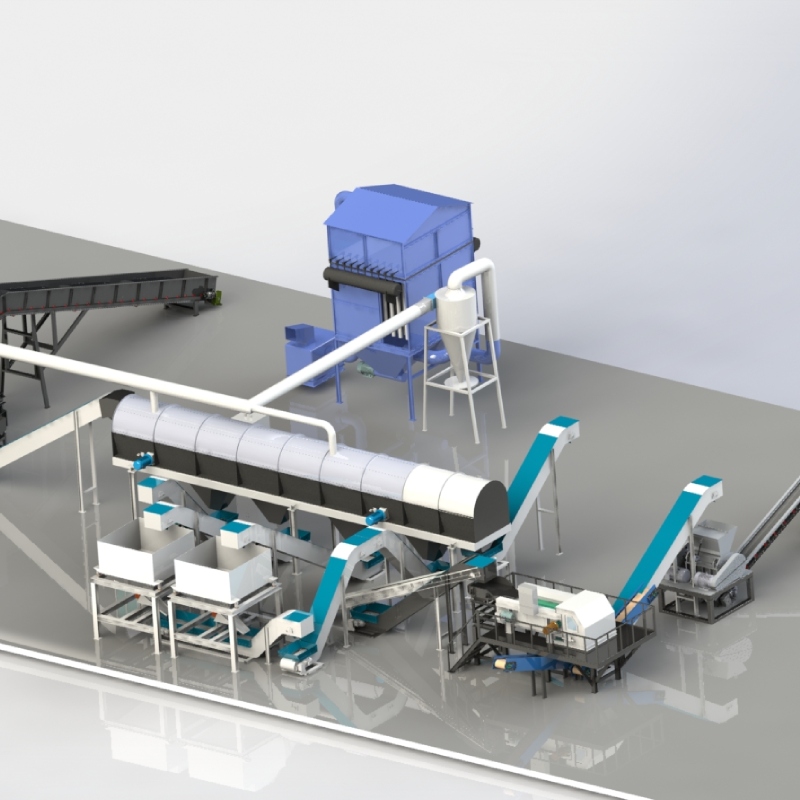

نومبر . 28, 2024 06:19 Back to list
How to Dispose of Electrical Goods Responsibly
As technology advances, our homes are filled with a myriad of electrical goods, ranging from the latest smartphones and laptops to appliances like microwaves and refrigerators. However, with innovation comes obsolescence, and eventually, we find ourselves faced with the question of how to dispose of old electrical goods responsibly. Improper disposal not only contributes to environmental pollution but can also be hazardous to public health. Therefore, understanding the best practices for disposing of electrical goods is crucial.
The Importance of Responsible Disposal
Electrical goods often contain hazardous materials, such as lead, mercury, and cadmium. When these products are discarded irresponsibly, these substances can leach into the soil and water supply, posing a threat to the ecosystem and human health. Furthermore, electrical waste, or e-waste, is one of the fastest-growing waste streams in the world. According to the United Nations, around 50 million metric tons of e-waste were generated in 2019 alone. This statistic highlights the pressing need for effective disposal methods that minimize environmental impact.
Recycling Programs
One of the most effective ways to dispose of electrical goods is through recycling programs. Many manufacturers and retailers offer take-back schemes that allow consumers to return old devices for recycling. These programs ensure that components are dismantled, repaired, or recycled, reducing the amount of waste sent to landfills. Some local governments also have designated e-waste recycling days, allowing residents to drop off old electrical goods at specific locations.
Before dropping off your electrical items, check with your local recycling center to understand their specific guidelines, as some places have restrictions on the types of materials they accept
.Donation
If your electrical goods are still functional, consider donating them instead of discarding them. Many charitable organizations accept working electronics and appliances, helping provide resources to those in need. Donations not only extend the life of a product but also contribute positively to your community. However, ensure that the donated items are in good working condition and meet safety standards.

Manufacturer Take-Back Programs
Some manufacturers have implemented take-back programs for their products. Brands like Apple, Dell, and Samsung allow consumers to return their old electronics, often offering incentives like discounts on new purchases. Participating in these programs can ensure that your discarded items are handled properly and responsibly. Check the official websites of your devices' manufacturers for information on their recycling policies.
Extended Producer Responsibility (EPR)
EPR is a policy approach that holds manufacturers accountable for the entire lifecycle of their products, including their disposal. Regions with EPR regulations require companies to take responsibility for collecting and recycling their electrical goods once they reach the end of their useful life. This initiative is gaining traction worldwide as a means to promote sustainable consumption and waste reduction.
Proper Disposal of Non-Recyclable Items
While many electronics can be recycled, some items may not have dedicated recycling pathways. For products that cannot be easily disposed of through recycling programs, such as certain types of batteries or old cathode-ray tube televisions, check for specialized disposal facilities. Many hazardous waste collection centers can accept such items, ensuring they are treated with care and disposed of properly.
Conclusion
In conclusion, responsibly disposing of electrical goods is essential for protecting our environment and health. By utilizing recycling programs, donating functional items, participating in manufacturer take-back initiatives, and following local regulations, we can all contribute to a more sustainable future. As consumers, it is our responsibility to ensure that our outdated technology does not become a burden on our planet. By taking the right steps, we can promote a circular economy where electrical goods are reused and recycled rather than cast aside.
Latest news
The Future of Metal Recycling: Revolutionizing Waste Management
NewsMay.14,2025
Optimizing Waste with Recycling Lines
NewsMay.14,2025
Municipal Solid Waste Sorting Line: Revolutionizing Waste Management
NewsMay.14,2025
Metal Shredders: Essential Tools for Efficient Recycling
NewsMay.14,2025
Maximize Your Profits with a Copper Wire Granulator
NewsMay.14,2025
Home Metal Shredder: A Smart Choice for Your Home Recycling Needs
NewsMay.14,2025